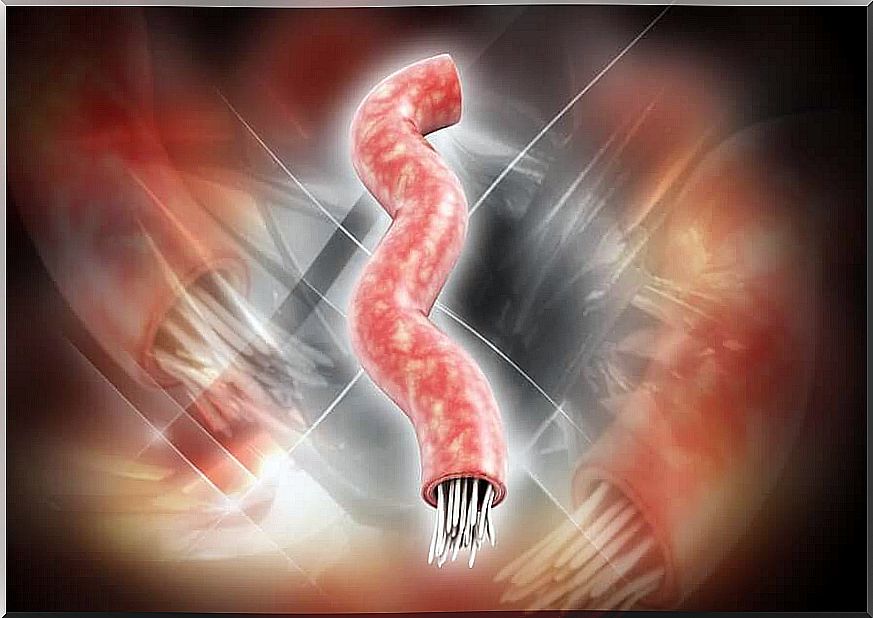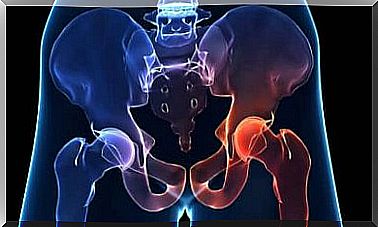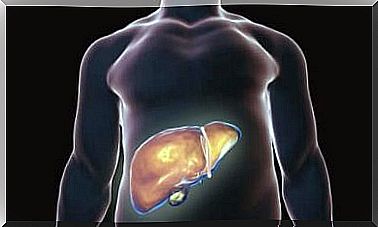Tapeworm: Symptoms, Causes And Treatment
Tapeworms are parasites that can spread throughout the body, which does not always have to trigger symptoms. Possible complaints, however, are digestive problems and neurological symptoms. Find out more about this topic today.

It is very common for a tapeworm to settle in the intestine after eating raw or undercooked beef or pork. The World Health Organization (WHO) informs that taeniasis, as the infestation by tapeworms is medically termed, can lead to unpleasant digestive problems and, in severe cases, to neurological complications.
How does an infection come about? What types of tapeworms can infect people? Today we answer these and other questions about this very common parasite. Read on!
The tapeworm and what you should know about it
Today we are talking about a genus of tapeworms belonging to the Taeniidae family. These are long, flat worms, also known as cestodes, and belong to the tribe of flatworms (platelet worms). They live as endoparasites in a host, but unlike viruses outside the cells.
The life cycle of tapeworms is complex. These parasites can also cause various, sometimes serious diseases, depending on their stage of development:
- Adult tapeworms lead to taeniasis when they definitely implant in their host’s intestines.
- The larvae and young tapeworms, on the other hand, cause cysticercosis, a more serious disease that occurs when the tapeworms spread to various organs and tissues.
An adult tapeworm has a flat and segmented shape and adapts to the anatomy of its final host. It has suction cups and hooks on its head to hold on to the intestinal wall and to be able to feed on the food that the host takes in.

A complex cycle
The Centers for Disease Control and Prevention (CDC) classify three subspecies of tapeworms that affect humans:
- Beef tapeworm: Taenia saginata
- Pork tapeworm : Taenia solium
- Asian tapeworm: Taenia asiatica
In contrast to many other parasites that can be transmitted from animals to humans, humans are the only final host of the tapeworm. To simplify its complex biological cycle, we can briefly summarize three different phases:
- The eggs get into the ground through the stool of an infected person, where they can linger for months.
- Pigs and cows eat the eggs randomly, and over time , larvae form which develop in the tissues of these animals and lead to cysticercosis.
- When a person then eats infected meat with young tapeworms, these settle in the intestinal tract, multiply and close the described cycle.
Tapeworm: symptoms of infection
In most cases, the tapeworm infection is asymptomatic. However, changes in the gastrointestinal tract and other complications can also occur. The clinical manifestations include the following complaints:
- Abdominal pain and loss of appetite
- Gradual weight loss with no obvious explanation
- General upset stomach
These symptoms usually arise when the parasite is already an adult. If a stool culture is not established in which the eggs of the adult tapeworm can be observed, a patient may have tapeworms for years without being aware of it.
To cysticercosis occurs exclusively by the tapeworm Taenia solium. In this case, humans do not become infected with larvae by consuming meat, but rather directly through the eggs. So the parasite does not use an intermediate host to develop the larvae and causes cysticercosis in humans by the larvae spreading in the tissues of the body. However, this is not the normal life cycle of a tapeworm.
The clinical picture in this case develops differently and depends on which body tissues are infected. When the larvae get into the brain, they cause neurological symptoms that are critical to recognizing the disease. The following symptoms are characteristic:
- Constant and intense headache
- Epileptic seizures
- Disorientation
- Memory loss

Prevention and treatment
Taeniasis and cysticercosis can be treated with anti-parasitic drugs. The prognosis for taeniasis is very good. With cysticercosis, however, surgical intervention may be necessary in some cases. If left untreated, the disease can be fatal in a relatively short period of time.
The best prevention is good hygiene and food control. Tapeworm infection is therefore rare in developed countries. The food is subjected to strict controls to prevent the sale of infected meat.









